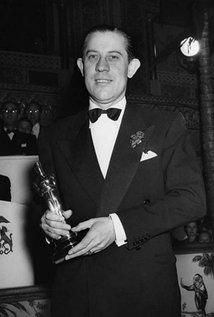Ernest Haller (Ernest Jacob Haller)

With his older brother’s help, Ernest Haller first joined the American Mutoscope and Biograph Company, also known as the Biograph Studio or Biograph, in 1914 as an actor. However, he seemed to have realized his true passion fairly quickly, for he switched to the camera department just within a year of joining the studio. At the time, Biograph’s one of the most prized possessions was D.W. Griffith, and Haller began his career as a cinematographer as an assistant cameraman to Griffith’s great cameraman, Billy Bitzer. His first work as a cameraman was The Hazards of Helen (1914), which was an early adventure film serial that was released by the Kalem Company. When D.W. Griffith left Biograph due to a disagreement between him and the studio regarding his feature film Judith of Bethulia (1914), the company gradually met its end. Eventually, the Biograph was bought by the First National Pictures, and First National was later bought by Warner Brothers. When Warner Brothers took over the First National, a number of the company’s finest cameramen including Haller followed.
Upon the launch of his career as a cinematographer, Ernest Haller worked vigorously, working in every department of the silent film days and photographing approximately fifty films in the next decade. The first motion picture that he was officially credited as a cinematographer was Mothers of Men in 1920. Some of Haller’s recognized works after that include Weary River (1928), Dawn Patrol (1930), The Rich are Always With US (1931)— a film where he first photographed Bette Davis—, The Emperor Jones (1933), and Dangerous (1935). In 1938, Ernest Haller received his first Academy Awards nomination for Best Cinematography for the film Jezebel. This recognition caught the eyes of David O. Selznick who was impressed with Haller work in Jezebel enough to borrow him from the Warner Bros. to participate in the legendary film, Gone with the Wind (1939), which granted Haller his first and only Oscar for Best Cinematography. Only a year after win first win, Ernest Haller received his third nomination for All This, and Heaven Too (1940), his fourth nomination for Mildred Pierce (1945) and fifth nomination for The Flame and the Arrow (1950).
However, with the coming of independent cinema, Ernest Haller and many other cameramen decide to continue their careers as freelancers. With Jim Thorpe— All American (1951) as his last film, Haller left Warner Brothers after 26 years. After working on few other films as a freelancer, Haller returned to Warner Bros. as an independent contractor for Rebel Without a Cause (1955). With this as a start, he continued to work on few other films for Warner Bros. including What Ever Happened to Baby Jane? (1962), which earned him his sixth nomination. Finally, his seventh and final nomination was only a year later with his work on Lilies of the Field (1963). Haller initially announced his retirement in 1965 but managed to briefly come out of it in July 1965 upon the request of director James Goldstone to film the second pilot of the Star Trek episode, “Where No Man Has Gone Before”. With this as his final credit, Haller retired from the motion pictures industry.
Born
- May, 31, 1896
- USA
- Los Angeles, California
Died
- October, 21, 1970
- USA
- Marina del Rey, California
Cause of Death
- car accident
Cemetery
- Forest Lawn Memorial Park (Glendale)
- Glendale, California
- USA


